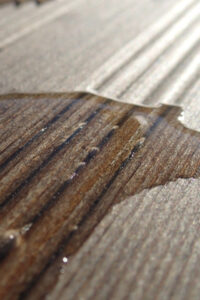Checking For Water Damage On Your Building’s Façade – What to Look For
 One of the biggest problems with water damage and mold is that the true extent of the damage reveals after some time. A damaged or warped floor might not look as severe as it is until the water dries up, at which point the damage might be too extensive. Hence, home restoration services suggest calling an expert who will evaluate the damage immediately after water ingress.
One of the biggest problems with water damage and mold is that the true extent of the damage reveals after some time. A damaged or warped floor might not look as severe as it is until the water dries up, at which point the damage might be too extensive. Hence, home restoration services suggest calling an expert who will evaluate the damage immediately after water ingress.
According to the Environmental Protection Agency (EPA), one of the biggest issues with homes in the US is water infiltration. This issue can be caused by underground seepage, flooding, or exploding or leaky pipes, a common occurrence in Nashville.
Unfortunately, water damage doesn’t just stop at being an inconvenience, it can become a hazard as well. When left for too long, you may experience mold inside and even on your building’s façade. Mold can even cause fire damage by coming in contact with an electrical point.
Here are some water damage indicators that home restoration service providers look for when inspecting a new building.
Water Damage Indicators on Your Building’s Façade
Since water damage doesn’t show itself until it’s too late, property owners should make a point of inspecting their homes from the inside as well as from the outside every 3 to 5 months. By the time water damage manifests into something visible, the damage is much worse than it seems.
Wet Spots
The most common water damage indicator you should look for includes wet spots on the wall or your roof. When checking the exterior of your house, keep an eye out for any discolored spots. If your house has oil paint on its exterior, you may find tears or saggy paint in some areas.
These are the classic indicators of seepage within the walls. Start from the top of your house and move downwards towards the basement. You don’t need any special tools for this, just daylight. More discolored and elongated discoloration worsens the water damage.
On the roof, these spots will manifest themselves in the form of flaking paint.
Flaking Paint or Cracked Drywall
As mentioned above, flaking paint means a very dire form of water damage that needs to be looked at immediately. If you find that the paint is flaking away from your roof, it means that the water has:
- Infiltrated your roof
- Damaged your shingles
- Made its way through the layer of concrete between the drywall and your roof
- Damaged your attic floor, and
- Has been around for far longer than it seems.
Paint flaking is a sign that mold isn’t far behind. To make sure you don’t miss water damage indicators, you will need to look at your walls and ceiling very carefully, perhaps at noon.
Pooling Water
From your driveway to the rooftop, if water is starting to pool anywhere near your house, expect water damage sooner or later. Standing water in the driveway usually seeps into the ground, damaging your foundation or simply watering your lawn, if you’re lucky.
Standing water on the roof, on the other hand, means it will start seeping into the flashing or underlayment, eventually damaging the shingles. Try to get rid of these pools and issue the problem as quickly as possible.
Constant Water Dripping Sound
Water tricking down can lead to wet spots on the building’s exterior. If you don’t see any spots on the wall, put your ear on the wall and listen for water trickling or dripping; this is best done from the inside at night. You may also find that the floor might be creaking from one point or the wall might get compressed.
Here, you can’t see water damage since the infiltration hasn’t reached the drywall yet. You should immediately diagnose where the leak is and fix it to avoid the damage from getting any worse. Once you find the source, you will also find where the water is dropping. You should dry it up immediately and call for home restoration services to check for mold.
Increased Utility Bills
If you find that your water meter is running a bit too fast or the bill is excessive based on your usage, now might be the time to get your pipes checked. Turn off all the faucets in your home and check the meter now. If it’s still running, double-check the faucets and check the meter again to be sure.
If you still find a running meter, you may have a hidden leakage and should call home restoration experts or a plumber immediately.
Moldy Smells
Perhaps one of the biggest water damage indicators that you could ask for is the smell. It will be more noticeable for you than to the owner because they might be used to living with the smell. For this, you may have to go closer to the building and be sharp.
A damp and moldy smell doesn’t necessarily mean that mold has already found roots, just that the spores are about to form roots. If you can smell it, it means you don’t have much time left to take care of this problem – perhaps This is an indication that you don’t have much time left to address the issue, probably no more than twelve to twenty-four hours.
When looking for these indicators, you should consider calling our experts at 911 Restoration. We would help you look for other specific water damage indicators in your building over the phone or come to your help in person.


